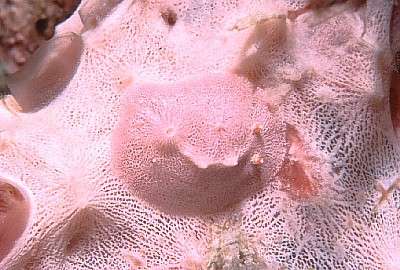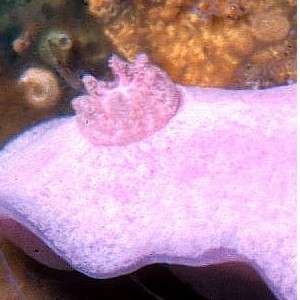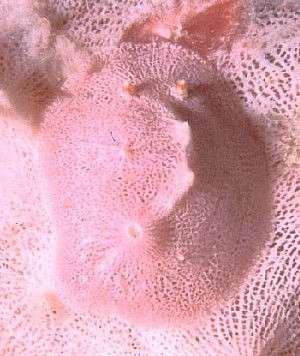A classic case of camouflage
August 30, 1999
From: Scott Johnson

Hi Bill,
Here's a beast I've puzzled about for some time. It is always found well camouflaged on its prey pink sponge. I removed a specimen from the sponge to take two of the attached shots. The sponge was in the reference collection of the Mid-Pacific Research Lab as Dysidea arenaria, but I'm not sure where the id came from. The sponge, and therefore the nudibranch, are typically found in quiet lagoon areas in the Marshalls, sometimes even growing as an unattached clump out in the middle of a silty sandy bottom. The nudibranch ranges up to about 15mm and is soft in texture but more firm than a Chromodoris. Curiously, the radula and reproductive system are very chromodorid-like.
Scott
johnson@kmr.ll.mit.edu


Dear Scott,
I know I shouldn't be surprised, but every time I see another masterly display of camouflage I am impressed. I know chromodorids aren't supposed to have a skin texture like a sponge but have a look at Verconia verconis, a cryptic chromodorid, endemic to southern Australia. Mind you the tight upraised gill circlet is also reminiscent of Actinocyclus and Hallaxa which have chromodorid-like radular teeth. Dorids feeding on sponges without spicules often have more elaborate denticulate teeth than those that feed on the tougher spiculate sponges.
Bill Rudman.
Related messages
-
Another record of Doris sp 7
From: Mark Atwell, August 7, 2007
